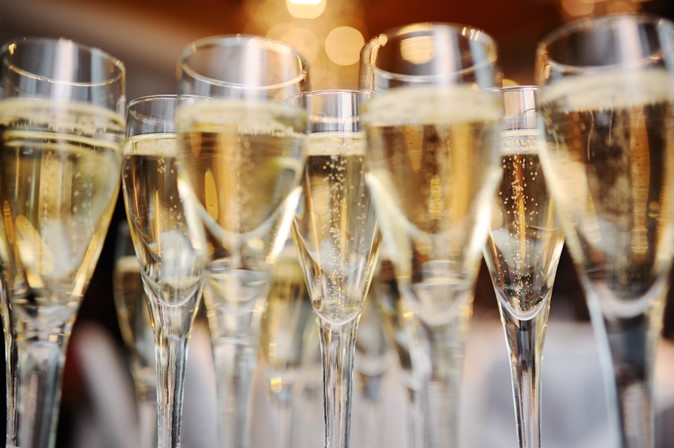
Cheryl Newbrough has years of experience reviewing the quality level of different Champagnes. With this knowledge often comes questions from others on how they can begin to grow their Champagne reviewing skills. Cheryl Newbrough notes that Champagne is after all, the epitome of luxury and celebration, shimmers in flutes, tantalizes taste buds, and ignites joy with its effervescence. Yet, navigating its quality can be as intimidating as popping a cork without a thumb. Aspiring connoisseurs should not be intimidated, however, as Cheryl Newbrough is here to help. This guide will equip you with the tools to confidently evaluate Champagne, unlocking a world of nuanced flavors and informed choices.
Cheryl Newbrough on Unveiling the Secrets of Appearance
Before a drop touches your tongue, let your eyes tell a story. Hold the flute up to the light. A pale gold or straw hue signifies a young, vibrant Champagne. Cheryl Newbrough notes that a deeper yellow or even amber hints at age and complexity. Be wary of overly pink or red hues, as these may indicate artificial coloring. Now, tilt the glass and observe the bubbles. A fine, persistent stream of tiny bubbles rising steadily to the surface indicates meticulous production and high quality. Large, rapidly rising bubbles suggest a less refined Champagne.
Cheryl Newbrough on a Symphony of Scents
Swirl the flute gently, releasing the captive aromas. Close your eyes and inhale deeply. What do you detect? Fresh citrus, green apple, brioche, or perhaps a hint of honey? These are common notes, but Cheryl Newbrough explains each Champagne is a unique orchestra. Brut styles often showcase citrus and floral notes, while aged Champagnes may reveal earthy, toasty, and even nutty aromas. Trust your nose – it’s a powerful guide.
The Palate’s Playground
Now comes the moment of truth. Take a small sip and let it coat your tongue. Notice the texture: is it creamy and rich, or light and crisp? Is it coarse with tiny bubbles tickling your palate, or smooth and elegant? Savor the flavors as they evolve. Brut Champagnes are typically dry and refreshing, with pronounced acidity and hints of citrus or green fruit. Vintage Champagnes may offer a fuller body, richer flavors like honey and dried fruit, and a more complex finish.
The Language of Brut
When it comes to Champagne, understanding the different levels of sweetness can enhance your experience. The driest options are Brut Nature and Extra Brut, which have minimal sugar added. These styles are perfect for those who prefer a crisp, refreshing taste without any sweetness.
If you’re looking for something in the middle ground, Cheryl Newbrough notes that Brut is a great option. It has a slightly higher sugar content than Brut Nature and Extra Brut, but still maintains a dry taste.
For those who enjoy a touch of sweetness, Extra Dry and Dry are the way to go. These styles have a bit more sugar added, but still offer a balanced taste.
Finally, Doux is the sweetest style of Champagne. It has the highest sugar content and is best enjoyed with dessert.
By paying attention to the sweetness levels, you can find the perfect Champagne to suit your taste preferences. Whether you prefer a dry, crisp taste or a sweeter option, there’s a Champagne out there for everyone.
Beyond the Basics
As you delve deeper, Cheryl Newbrough encourages you to consider these nuances:
Balance: Does the acidity, sweetness, and fruitiness harmonize into a seamless experience, or do they clash?
Length: How long do the flavors linger after you swallow? A long finish indicates a complex, well-made Champagne.
Character: Does the Champagne have a distinct personality? Does it evoke emotions like joy, contemplation, or elegance?
Sharpen Your Skills
Practice is key! Attend tastings, compare Brut vs. Extra Brut, explore different grape blends (Pinot Noir, Chardonnay, Pinot Meunier), and experiment with vintage and non-vintage Champagnes. Engage with winemakers, sommeliers, and fellow enthusiasts. Discuss your experiences, ask questions, and be open to diverse perspectives.
Embrace the Journey
When it comes to evaluating Champagne, it’s important to understand that it’s not just about the drink itself. It’s about the experience of discovering the subtle nuances and complexities that each bottle has to offer. It’s about taking the time to appreciate the craftsmanship and dedication that goes into creating each unique blend.
To truly appreciate Champagne, Cheryl Newbrough believes you need to let go of any preconceived notions or biases you may have. It’s not about being a snob or showing off your knowledge of the drink. It’s about embarking on a personal journey of discovery, where you can explore the different flavors, aromas, and textures that each bottle has to offer.
As you begin your journey, it’s important to trust your senses and let the bubbles guide you. Take your time to savor each sip, and pay attention to the way the flavors and aromas evolve over time. With each bottle, you’ll discover something new and exciting, and you’ll gain a deeper appreciation for the art of Champagne-making.


